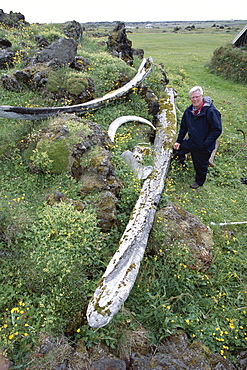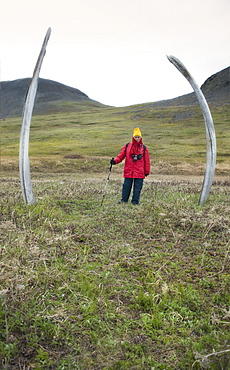Recent searches
Loading...
1383-17 - Hippopotamus Amphibius - otherwise know as Hippo are plentiful in the Luangwa River. The open jaw is often used as a warning by male hippos looking after their females.
1353-507 - Night sky over The Devils Jaw (The Devils Teeth) (Okshornan) mountains, Tungeneset, Senja, Troms og Finnmark county, Norway, Scandinavia, Europe
1353-486 - The Aurora Borealis (Northern Lights) display over The Devils Jaw (Devils Teeth) (Okshornan mountains), Tungeneset, Senja, Troms og Finnmark County, Norway, Scandinavia, Europe
1353-479 - The Devils Jaw (Devils Teeth) at sunset, Tungeneset, Senja, Troms og Finnmark County, Norway, Scandinavia, Europe
1353-480 - The Devils Jaw (Devils Teeth) at sunset, Tungeneset, Senja, Troms og Finnmark County, Norway, Scandinavia, Europe
1353-476 - Rough Seas at The Devils Jaw (Devils Teeth) at sunset, Tungeneset, Senja, Troms og Finnmark County, Norway, Scandinavia, Europe
1353-475 - The Aurora Borealis (Northern Lights) over The Devils Jaw (Devils Teeth) (Okshornan mountains), Tungeneset, Senja, Troms og Finnmark County, Norway, Scandinavia, Europe
1353-455 - The Aurora Borealis (Northern Lights) over The Devils Jaw (The Devils Teeth), Oskornan mountains, Tungeneset, Senja, Troms og Finnmark County, Norway, Scandinavia, Europe
1353-450 - The Devils Teeth (The Devils Jaw), viewed from Ersfjordstranda beach at sunset in winter, Senja, Troms og Finnmark County, Norway, Scandinavia, Europe
1353-432 - The Aurora Borealis (Northern Lights) over The Devils Jaw (Devils Teeth), Oskornan mountains, Tungeneset, Senja, Troms og Finnmark County, Norway, Scandinavia, Europe
1353-429 - The Aurora Borealis (Northern Lights) over The Devils Jaw (Devils Teeth), Oskornan mountains, Tungeneset, Senja, Troms og Finnmark County, Norway, Scandinavia, Europe
1353-425 - The Devils Jaw (the Devils Teeth), Oskornan mountains, Tungeneset, Senja, Troms og Finnmark County, Norway, Scandinavia, Europe
1353-424 - The Aurora Borealis (Northern Lights) over The Devils Jaw (Devils Teeth), Oskornan mountains, Tungeneset, Senja, Troms og Finnmark County, Norway, Scandinavia, Europe
1353-423 - The Devils Jaw (the Devils Teeth), Oskornan mountains, Tungeneset, Senja, Troms og Finnmark County, Norway, Scandinavia, Europe
1366-141 - Wadi al Hitan, Faiyum, Egypt. February 20, 2022. Fossil whale jaw in the museum at Wadi el-Hitan paleontological site.
1348-5325 - Gloved hands of an orthodontist who inspects the teeth of an 8-year-old girl to correct the bad posture of the jaws and teeth with the installation of braces, France, Europe.
1350-2481 - Giant clam, Tridacna gigas, siphon detail, Rongelap, Marshall Islands, Micronesia
1350-2436 - Thrill seekers experience cage diving with Galapagos sharks, Carcharhinus galapagensis, North shore, Oahu, Hawaii, USA
1350-2484 - Horseshoe clam, Hippopus hippopus, Rongelap, Marshall Islands, Micronesia
1350-2474 - Reef octopus, Octopus cyanea, eye and siphon detail, Rongelap, Marshall Islands, Micronesia
1178-36777 - Doctors examining x-ray of skull and jaw on digital tablet
1116-50386 - Close-up of Nile crocodile (Crocodylus niloticus) with open jaws, Grumeti Serengeti Tented Camp, Serengeti National Park; Tanzania
1116-50280 - Beautiful and bright electrical storm with a church in the foreground; Moose Jaw, Saskatchewan, Canada
832-386377 - Spectacled caiman (Caiman crocodilus yacare), open mouth with leeches, animal portrait, Pantanal, Mato Grosso, Brazil, South America
1116-46275 - Close Up Of Yacare Caiman (Caiman Yacare) Eating Small Fish, Mato Grosso Do Sul, Brazil
1116-46235 - Yacare Caiman (Caiman Yacare) On Muddy Shore Facing Camera, Mato Grosso Do Sul, Brazil
832-379032 - Yacare Caiman (Caiman yacare, Caiman crocodilus yacara), Pantanal, Mato Grosso do Sul, Brazil, South America
586-1500 - Colonial Manager's House 1846 and the new church with whalebone jaw arch, Sisimiut (Holsteinsborg), Qeqqata, Greenland, Polar Regions
917-616 - Fin Whale, Balaenoptera physalus, surfacing at speed, blowing, showing jaw line, mouth, blowhole, Pico, Azores, Atlantic Ocean
1175-756 - View of road and trees in Moose Jaw at morning light, Saskatchewan, Canada
1175-753 - Moose Jaw River Park in Wakamow Valley, Saskatchewan, Canada
1175-755 - Wakamow valley on Moose Jaw River, Saskatchewan, Canada
911-10802 - A householder in Port Stanley in the Falkland Islands who has created a whale museum, with an anti whaling slant.
911-10209 - The Christian, Christ Church Cathedral in Port Stanley, the capital of the Falkland Islands, the most southerly cathedral in the world, with a whale bone arch from Blue whale lower jaw bones.
911-10210 - The Christian, Christ Church Cathedral in Port Stanley, the capital of the Falkland Islands, the most southerly cathedral in the world, with a whale bone arch from Blue whale lower jaw bones.
832-300591 - Footbridge leading under an arch made of a whale's jaw bone, Local History Museum, Qeqertarsuaq, Disko Island, Disko Bay, Greenland, Arctic
832-299149 - Museum near Moose Jaw, Saskatchewan, Canada
832-299152 - Main street of Moose Jaw, Saskatchewan, Canada
817-449246 - The ruins of the ancient city of Palmyra, Syria.
1161-3911 - Black bull with ring through nose in paddock meadow in The Cotswolds, Oxfordshire, England, United Kingdom
1161-1546 - Crocodile in muddy shallows of the Mossman River, Daintree, Australia
1161-1545 - Crocodile in muddy shallows of the Mossman River, Daintree, Australia
817-448015 - The ruins of the ancient city of Palmyra, Syria.
990-174 - The white tip of a Finback whaleÌs (Balaenoptera physalus) snout showing a distinctive characteristic of this species; the lower right jaw is white in colour whereas the left side is dark. Gasp», Canada
1113-56796 - Mountain top of Teide, Pico del Teide, 3718m from Pinar de Chio, Tenerife, Canary Islands, Spain
1113-41950 - Whale Jaw Bone as entrance to the main house in the Museum, Carl-Haeberlin-Friesenmuseum, Wyk, North Sea Island Foehr, Schleswig-Holstein, Germany
1116-37710 - Hawaii, Maui, North Shore, Buzzy Kerbox surfs large curling wave, Jaws aka Peahi
1116-30412 - Mexico, Guadalupe Island, Great White Shark (Carcharodon carcharias) near safety steel cage.
1116-37724 - Hawaii, Maui, Peahi, Buzzy Kerbox surfing big wave curling and crashing behind
1116-35797 - Florida, Big Cypress National Park, American Alligator [For use up to 13x20 only]
1116-35857 - Hawaii, Maui, Large wave crashing at JAWS, well known surf spot
1116-31049 - Micronesia, Yap, Yellow juvenile jacks swim with a grey reef shark, (Carcharhinus amblyrhynchos).
1116-31053 - Hawaii, This galapagos shark (Carcharhinus galapagensis) can reach twelve feet in length and is listed as potentially dangerous. It has been attracted with bait and has broken the surface with a splash.
1116-29219 - Caribbean, Bonaire, Great Barracuda (Sphyraena Barracuda).
1116-29223 - Caribbean, Bonaire, Great Barracuda (Sphyraena Barracuda).
1116-37714 - Hawaii, Maui, North Shore, Buzzy Kerbox surfs huge wave crashing behind Peahi AKA Jaws
1116-30405 - Mexico, Guadalupe Island, Great White Shark (Carcharodon carcharias) biting down on bait above ocean surface.
1116-37711 - Hawaii, Maui, Buzzy Kerbox surf curling wave at Jaws aka Peahi, curling wave
1116-30411 - Mexico, Guadalupe Island, Great white Shark (Carcharodon carcharias) facing steel cage.
1116-28615 - Hawaii, Maui, Peahi or Jaws, Surfer on a huge wave.
1116-21871 - Horse at sunset near Moose Jaw, Saskatchewan
1116-21870 - Goats and Llamas in field at sunset near Moose Jaw, Saskatchewan
857-9026 - A polar bear jaw dries in the high arctic sun awaiting the foreign hunter who took it during a paid hunt.
832-17985 - giraffe, chewing, looking straight to camera
908-8 - Great White Shark (Carcharodon Carcharias) swimming with shoal of fish.
Isla Guadalupe, Mexico.
908-9 - Great White Shark (Carcharodon Carcharias) swimming with shoal of fish.
Isla Guadalupe, Mexico.
908-25 - Basking Shark (Cetorhinus maximus) Close up of tail. Cornwall, UK
Restricted resolution (Please contact us). (RR)
908-5 - Great White Shark (Carcharodon Carcharias) swimming with shoal of fish.
Isla Guadalupe, Mexico.
(RR)
908-7 - Great White Shark (Carcharodon Carcharias) swimming with shoal of fish. Isla Guadalupe, Mexico. (A4 only).
908-27 - Basking Shark (Cetorhinus maximus) Close up of head. Cornwall, UK. (A4 only).
908-6 - Great White Shark (Carcharodon Carcharias) swimming with shoal of fish.
Isla Guadalupe, Mexico.
908-4 - Great White Shark (Carcharodon Carcharias) swimming with shoal of fish.
Isla Guadalupe, Mexico.
1036-217 - Upper and lower jaw bones (+ one rib) of a blue whale (Balaenoptera musculus) at an old whaling station. BBC Broadcaster John Craven for scale. Snaefellsness Peninsular, Iceland.
1036-216 - Upper and lower jaw bones (+ one rib) of a blue whale (Balaenoptera musculus) at an old whaling station. Snaefellsness Peninsular, Iceland.
1036-178 - Fishermen displaying tiger shark (Galeocerdo cuvier) jaw in the fish market. Dar es Salaam, Tanzania
1036-177 - Fishermen displaying Tiger shark (Galeocerdo cuvier) jaw in the fish market. Dar es Salaam, Tanzania
917-402 - Humpback Whales (Megaptera novaeangliae) lunge-feeding on Krill. Monterey, California, Pacific Ocean. MORE INFO: Baleen Plates are visible on the top jaw & Krill can be seen escaping from the animals mouths.
917-90 - Common Dolphin (Delphinus delphis) with a deformed jaw. Azores, North Atlantic. Taken 2008
917-422 - Humpback Whales (Megaptera novaeangliae) 2 adult animals lunge-feeding on Krill. Monterey, California, Pacific Ocean. MORE INFO: Baleen Plates are visible on the top jaw.
985-23 - Blue whale (Balaenoptera musculus) lunge feeding at the surface. The whale is upside down to the visible part is the lower jaw upside down. Monterey Bay, California, USA
917-91 - Common Dolphin (Delphinus delphis) with a deformed jaw. Azores, North Atlantic. Taken 2008
921-791 - Whalebone Alley grand vista, female tourist standing on cliff face, Itygran Island (Bering Sea) Russia, Asia. MORE INFO: Whale Bone Alley was discovered by Soviet archaeologists in 1976, but has remained untouched since and little is known of this place. There is a long double line of bowhead whale bones -- jaws and ribs -- running parallel along the shore for hundreds of yards. Many of the bones, especially the enormous jaw bones, are still standing, propped up by lichen-covered rocks. The location is thought to have been used in about 1300 as a ceremonial site, for a men's secret society or feasting site.
921-701 - Whalebone Alley, Bowhead whale bone, Itygran Island (Bering Sea) Russia, Asia. MORE INFO: Whale Bone Alley was discovered by Soviet archaeologists in 1976, but has remained untouched since and little is known of this place. There is a long double line of bowhead whale bones -- jaws and ribs -- running parallel along the shore for hundreds of yards. Many of the bones, especially the enormous jaw bones, are still standing, propped up by lichen-covered rocks. The location is thought to have been used in about 1300 as a ceremonial site, for a men's secret society or feasting site.
921-703 - Whalebone Alley, Bowhead whale bones, Itygran Island (Bering Sea) Russia, Asia. MORE INFO: Whale Bone Alley was discovered by Soviet archaeologists in 1976, but has remained untouched since and little is known of this place. There is a long double line of bowhead whale bones -- jaws and ribs -- running parallel along the shore for hundreds of yards. Many of the bones, especially the enormous jaw bones, are still standing, propped up by lichen-covered rocks. The location is thought to have been used in about 1300 as a ceremonial site, for a men's secret society or feasting site.
921-699 - Whalebone Alley grand vista, female tourist standing on cliff face, Itygran Island (Bering Sea) Russia, Asia. MORE INFO: Whale Bone Alley was discovered by Soviet archaeologists in 1976, but has remained untouched since and little is known of this place. There is a long double line of bowhead whale bones -- jaws and ribs -- running parallel along the shore for hundreds of yards. Many of the bones, especially the enormous jaw bones, are still standing, propped up by lichen-covered rocks. The location is thought to have been used in about 1300 as a ceremonial site, for a men's secret society or feasting site.
931-99 - Fin whale (Balaenoptera physalus) showing white lower jaw in calm sea. Gulf of California. (RR)
921-702 - Whalebone Alley, female tourist sitting on bowhead whale bone, Itygran Island (Bering Sea) Russia, Asia. MORE INFO: Whale Bone Alley was discovered by Soviet archaeologists in 1976, but has remained untouched since and little is known of this place. There is a long double line of bowhead whale bones -- jaws and ribs -- running parallel along the shore for hundreds of yards. Many of the bones, especially the enormous jaw bones, are still standing, propped up by lichen-covered rocks. The location is thought to have been used in about 1300 as a ceremonial site, for a men's secret society or feasting site.
921-700 - Whalebone Alley, female tourist standing around still intact extremly old inuit elder grave, skeleton still present. Itygran Island (Bering Sea) Russia, Asia. MORE INFO: Whale Bone Alley was discovered by Soviet archaeologists in 1976, but has remained untouched since and little is known of this place. There is a long double line of bowhead whale bones -- jaws and ribs -- running parallel along the shore for hundreds of yards. Many of the bones, especially the enormous jaw bones, are still standing, propped up by lichen-covered rocks. The location is thought to have been used in about 1300 as a ceremonial site, for a men's secret society or feasting site.
917-414 - Humpback Whale (Megaptera novaeangliae) lunge-feeding on Krill. Monterey, California, Pacific Ocean. MORE INFO: Baleen Plates are visible on the top jaw & Krill can be seen escaping from the animals mouth.
917-420 - Humpback Whale (Megaptera novaeangliae) lunge-feeding on Krill. Monterey, California, Pacific Ocean. MORE INFO: Baleen Plates are visible on the top jaw & Krill can be seen escaping from the animals mouth.
917-419 - Humpback Whale (Megaptera novaeangliae) lunge-feeding on Krill. Monterey, California, Pacific Ocean. MORE INFO: Baleen Plates are visible on the top jaw & Krill can be seen escaping from the animals mouth.
917-92 - Common Dolphin (Delphinus delphis) with Deformed Jaw. Azores, North Atlantic. Taken 2008
921-704 - Whalebone Alley, female tourist standing between bow head whale rib bones, Itygran Island (Bering Sea) Russia, Asia. MORE INFO: Whale Bone Alley was discovered by Soviet archaeologists in 1976, but has remained untouched since and little is known of this place. There is a long double line of bowhead whale bones -- jaws and ribs -- running parallel along the shore for hundreds of yards. Many of the bones, especially the enormous jaw bones, are still standing, propped up by lichen-covered rocks. The location is thought to have been used in about 1300 as a ceremonial site, for a men's secret society or feasting site.
917-346 - Humpback Whale (Megaptera novaeangliae) lunge-feeding on Krill. Monterey, California, Pacific Ocean. MORE INFO: Baleen Plates are visible on the top jaw & Krill can be seen escaping from the whales mouth.
921-810 - Whalebone Alley grand vista, high altitude flora, Itygran Island (Bering Sea) Russia, Asia. MORE INFO: Whale Bone Alley was discovered by Soviet archaeologists in 1976, but has remained untouched since and little is known of this place. There is a long double line of bowhead whale bones -- jaws and ribs -- running parallel along the shore for hundreds of yards. Many of the bones, especially the enormous jaw bones, are still standing, propped up by lichen-covered rocks. The location is thought to have been used in about 1300 as a ceremonial site, for a men's secret society or feasting site.

















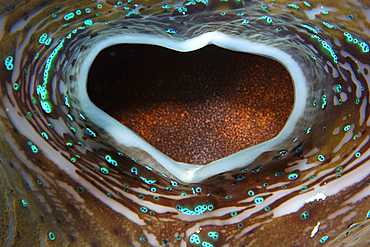

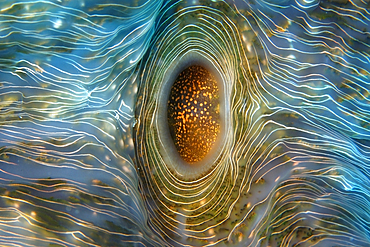







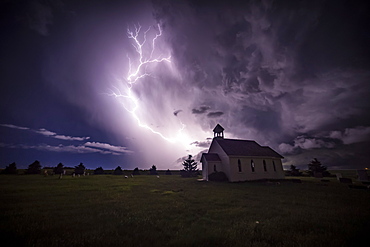


























![Florida, Big Cypress National Park, American Alligator [For use up to 13x20 only]<br />1116-35797 Florida, Big Cypress National Park, American Alligator [For use up to 13x20 only]](https://images.robertharding.com/zoom/RM/RH/VERTICAL/1116-35797.jpg)






















